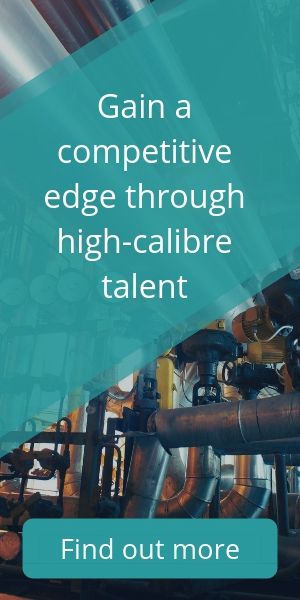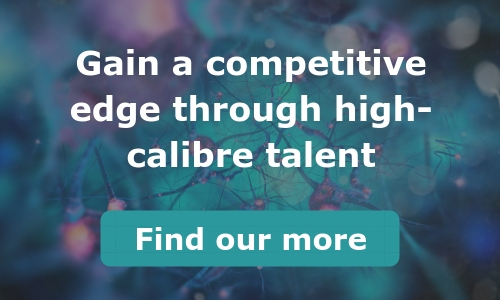A robust employer brand can give your life science organisation a competitive edge in the war for talent. Honed through carefully crafted messaging tailored to your ideal candidate personas, and a dedication to practicing what you preach, your employer brand can help you:
- Attract and engage top talent: Both active candidates seeking new opportunities and passive candidates working for your competitors.
- Retain top talent: By continually refining your Employee Value Proposition (EVP), you involve your employees and build a better workplace.
- Impact the bottom line: By reducing employee turnover, attracting more qualified applicants, reducing time-to-hire and paying less on salaries.
Employer brand is the reputation of your organisation as an employer. It amplifies key elements of your employee value proposition (EVP) while reinforcing the reasons why your organisation is an exceptional place to work. You can read more about employer brand here.
Just as Rome wasn’t built in a day, neither is your employer brand; taking months, if not years, to craft and cultivate. However, unlike Rome, your employer brand might not stand the test of time. Just as bad PR can weak havoc for your corporate brand, a negative candidate or employee experience can undermine the very foundations your employer brand is built upon. To ensure any degree of success, it requires constant nurturing, which translates into investment, resources and leadership buy-in. For more on the obstacles impeding your employer brand and how to overcome them, click here.
As with any investment, it’s good to ensure you are making a return on investment (ROI). This means you need to be measuring the right metrics from the outset, and understand their limitations – there are many variables that can muddy the water. So what are those metrics, and how do they help us measure our ROI? In this insight, we explore the 9 metrics your should be tracking when measuring the effectiveness of your employer brand.
9 employer branding metrics you should be tracking
1) Job offer acceptance rate
A powerful employer brand should be reflected in your job offer acceptance rate, which should increase. If it doesn’t, this could be indicative of a poor candidate experience, bottlenecks in your hiring process, or worse, over-branding, whereby your employer brand is over-hyped and does not represent who you are as an employer. Regardless of whether a candidate accepts or rejects your job offer, always seek feedback. This is especially important for candidates who reject your job offer. Find out why you are not their employer of choice and which companies they favour instead.
2) Time-to-hire
If you have a resilient employer brand, this should be evident in your time-to-hire. According to Workable, time-to-hire is “…the time elapsed between engaging a candidate and then accepting an offer”. It can help you identify, among other things, bottlenecks in your hiring process and the strength of your employer brand. According to LinkedIn, employer brand can increase time-to-hire by 200%. This is principally because you will spend less time selling and more time qualifying candidates. Applicants are more informed as to what you do, and want to work for your organisation.
3) Quality of hire
Quality of hire is a measure of the value that a new hire brings to your company. According to LinkedIn’s Global Recruiting Trends 2016 report, quality of hire is the single most valuable performance KPI in recruitment, but it is notoriously difficult to measure, encompassing several of the metrics listed here. Quality of hire can be a good indicator of a robust employer brand. Simply put, if you employer brand is on song, you will attract more qualified candidates, the productivity of your workforce will increase, and retention rates will improve across the board.
4) Hiring Manager satisfaction
Don’t leave your hiring managers out of the equation. As the individual who will bear ultimate accountability for your new hire, they will be able to offer first-hand insight into quality-of-hire. Moreover, because they are an intrinsic part of the hiring process, but aren’t responsible for it, they can provide invaluable feedback into the integrity of your hiring process. If your hiring manager is questioning the quality of shortlisted applicants, or worse still, finds that they don’t live up to expectations once they have settled in their new role, your employer brand might need tweaking.
5) Employee referrals
There is no better indicator of the strength of your employee brand than employee referrals. Not only are employee referrals the leading source of quality, cost-effective hires, but it means your employees are happy to recommend your company to their friends, family and wider network. Trust us, there is no greater endorsement than that. Engaged employees are more likely to leave positive reviews on review sites like Glassdoor too, or even actively participate in your employer brand communications, for example, testimonials or day-in-the-life videos. A win-win scenario.
RELATED: Increase quality-of-hire by partnering with a reputable boutique talent consultancy
6) Employee engagement rate
Employee engagement should improve as your employer brand matures. Employer brand can’t be fabricated. To ensure it accurately reflects who you are as an organisation, you have to live and breath your employer value proposition (EVP), which means engaging your employees. As a minimum, get feedback on how your employees perceive your company through regular surveys. (This will demonstrate that you take your employment duties seriously). But don’t stop there. Involve your employees in your employer branding campaigns and showcase their achievements.
7) New hire retention rate
Employees come and go. Fact. However, if the rate at which you employees are departing is increasing, and you have not increased headcount, you have problems. This would indicate that your employees are not engaged or they do not perceive you to be a reputable employer. They will jump ship as soon as the opportunity arises, and erode your employer brand through negative reviews. In contrast, a resilient employer brand will increase your retention rate as your employees want to work for you. Conduct exit interviews to gain invaluable insight into why you staff are leaving.
8) Win/Lose ratio
If you are an eminent company with a powerful employer brand, you’ll be able to entice candidates from your competitors. However, the reverse is true too. Your win/lose ratio helps you benchmark your employer brand compared to your competitors. It measures how many applicants come from your competitors, and how many of your talented employees you loose to them.
9) Awards won
Employment awards are a safe bet that your employer brand is on song. However, you don’t have to win to directly benefit from the experience. Even the application process can help you benchmark your employer brand, while a nomination represents excellent publicity and assurance that your employer brand is fit and healthy. But remember, you can’t win if you don’t enter.
While all 9 metrics listed above will help your measure the effectiveness of your employer brand, you should choose a primary metric – the Metric that Matters (MtM) – which aligns with your organisational goals. This metric will be the one your focus on above all others, and which will determine the success of your employer branding exercise. For example, if you are one of the lucky few who have optimised quality-of-hire, you might want to focus you attention on time-to-hire to help reduce the costs associated with your hiring efforts. In the next section, we’ll show you how.
Measuring employer brand Return on Investment (ROI)
You know what hiring metrics to measure and have determined your primary metric, but how do you translate these into Return On Investment (ROI)? The answer: assign a financial value to your primary metric and divide this by the cost of delivering your employer brand. For the mathematicians among us, the formula is: ROI = [(Financial value – project costs)/project costs] x 100.
First things first, you need to account for your costs or you wont be able to calculate ROI. Below are typical costs associated with the development and upkeep of employer brand:
- Employee time spent on delivering employer brand efforts, calculated as an hourly rate.
- Costs of developing and maintaining all communication materials and channels.
- Third-party expenses, for example, web hosting for your careers website.
Now that you have determined your cost, you need to calculate a value for your primary metric. How you do this will very from metric to metric. If we revisit the scenario where you had nailed your quality-of-hire and were looking to reducing time-to-hire, you would first need to ascertain the cost of a vacancy, i.e. opportunity lost as a result of the position being vacant. This will give you a figure for how much revenue each employee generates a day, and thus, by multiplying this figure by the number of vacancies, how much revenue you are loosing to vacant positions each day.
Having arrived at this figure, you now need to examine the impact your employer branding efforts have had on time-to-hire. How much have they reduced time-to-hire by? To calculate the answer, multiply the value your calculated for the cost of vacant positions each day by the number of days saved. This figure will be a saving – the benefit unlocked by your employer brand strategy.
Armed with this information, you want to enter this information into the ROI formula as per below:
ROI = [(((cost of vacancy x no. days saved) x no. vacant positions) – employer brand deliver cost)/employer brand deliver cost] x 100
So there you have it; the formula for calculating the ROI of your employer brand and an example of how you can translate this into determining ROI from a time-to-hire prospective. You can make similar calculations for all the metrics listed. However, it’s important to note that this can be a subjective exercise; you are not always granted the luxury of working with financial figures.
Keep tweaking your employer brand and hiring strategy to see how it effects the metrics above, most importantly, the metric that matters for your organisation. Monitor which campaigns have an impact on your employer brand, and which miss the mark. Just remember that employer brand is a long-term investment, so don’t get disinterested if you don’t see results in the first few months.
For more hiring advice tailored to hiring managers in the life science industry…
- Read Key Employer Brand Challenges In Life Science Recruitment.
- View our talent solutions to see how we can help you gain a competitive edge through talent.
* Fraser Dove International is a talent consultancy operating exclusively across the life sciences industry. While our roots lie in executive search, we provide more than the traditional recruitment services. Uniquely placed within the market, we have been providing cutting-edge talent solutions and insight to organisations at all stages of their journey – from start-up to established leaders – since 2013.

 Estimated read time: 5 mins
Estimated read time: 5 mins Date posted:02/09/2019
Date posted:02/09/2019





